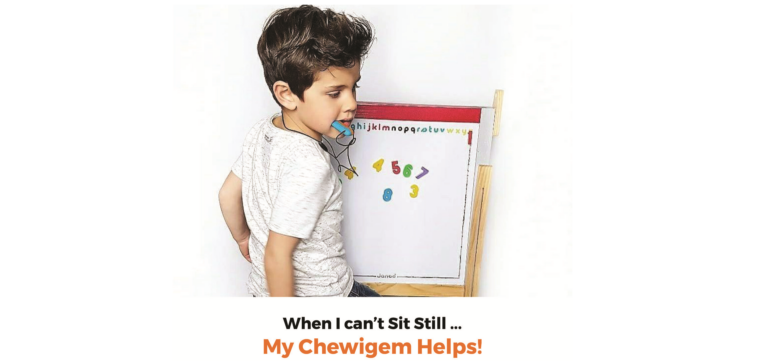
Chewelry serves as a practical and safe solution for kids who need something to chewon. This sensory tool can be incredibly beneficial for children with specific sensory needs, as well as those going through normal developmental stages like teething. Ifyou’re wondering whether chewelry is right for your child, here are several signs thatmight indicate its usefulness.
1. Frequent Chewing on Non-Food Items
One of the most obvious signs is when a child frequently chews or bites on things that aren’t meant to be chewed, such as shirt sleeves, pencils, toys, or even their own fingers and arms. This behavior often points to a sensory processing need where the child is seeking additional proprioceptive input through their jaw and mouth. Kids chewelry can provide a safe and appropriate alternative for satisfying this need.
2. Teething
Young children and toddlers who are teething often experience discomfort that can be alleviated through chewing. If your toddler seems to be constantly putting objects in their mouth to gnaw on, chewelry designed specifically for teething can provide relief while ensuring safety, as it’s made from materials that are tough yet gentle on the gums. If your child has Sensory Processing Disorder or autism, even older children may not
understand the reason for oral discomfort. Providing them with chewelry ensures that the objects they chew on are safe. Chewigem recommends the Tread Bracelet or Bubba Bracelet as being safe for all ages.
3. Difficulties with Focus and Attention
Children who struggle with maintaining focus during tasks that require sustained attention or who have challenges with transitions, might find chewing helpful. Chewing has been shown to help some children increase their alertness and focus during activities that may otherwise be challenging for them. Chewelry can be a discreet and effective tool in such situations, helping them manage their concentration and engagement.
4. Sensory Processing Disorders
Children with sensory processing disorders often find chewelry beneficial as it helps them manage sensory overload and anxiety. For these children, chewing provides necessary sensory input that helps them regulate their sensory system and feel more grounded. It’s especially useful in environments that might be overwhelming or stressful.
5. Anxiety and Stress
Just as adults might bite their nails or tap their feet when anxious, children often seek physical ways to manage stress. Chewing releases endorphins in the body which makes it a soothing activity that helps reduce feelings of anxiety. Chewelry offers a safe and acceptable way for kids to manage their stress and soothe themselves.
6. Autism Spectrum Disorder
Many children on the autism spectrum benefit significantly from chewelry. They might use it as a way to deal with sensory sensitivities or to help manage behaviors that stem from cognitive, communication challenges or social stresses. In these cases, chewelry not only satisfies the urge to chew but also provides a focal point which can help during moments of sensory overload.
7. Oral Motor Needs
Some children may have oral motor difficulties which could include challenges with swallowing, speech, or drooling. Chewelry can assist in strengthening the muscles in the mouth and jaw, which can help improve their oral motor skills.
How to Choose and Introduce Chewelry
If you recognize one or more of these signs in your child, it may be time to introduce chewelry to your kids. Choosing the right chewelry is the next step. It’s important to select chewelry that is made from safe, non-toxic materials designed to withstand heavy chewing. Products made from medical-grade silicone, free from BPA, PVC, lead, and phthalates are usually the best choice.
Introduce chewelry to your child in a positive and engaging way. Explain how it works and its benefits, and let your child pick out a style or color that they feel excited about. Monitor their initial use to ensure they are comfortable and that the chewelry is meeting their needs effectively.
Conclusion
Chewelry isn’t just a trendy accessory—it’s a functional tool that can help kids manage sensory needs, focus issues, anxiety, and more. Recognizing the signs that your child might benefit from it and preparing your child for chewelry in a relaxed manner can make a significant difference in their daily life, providing them with a safe outlet for their chewing needs while reducing the likelihood of them chewing on inappropriate objects.
© Copyright Deyon Ventures Inc. 2025
Chewigem Canada is located on Treaty 1 Territory, the traditional lands of the Anishinaabeg, Cree, Oji-Cree, Dakota, Dene Peoples and the homeland of the Métis Nation. Chewigem respects the Treaties that were made on this territory and is dedicated to working with all in the spirit of reconciliation for as long as the sun shines, the grass grows, and the river flows.
Chewigem Canada est située sur les terres traditionnelles du Traité no. 1 des peuples Anishinaabe, Cri, Oji-Cree, Dakota et Dene, et sur la patrie de la Nation métisse. Nous reconnaissons les traités et les relations qui font notre communauté et nous nous engageons à travailler ensemble dans un esprit de réconciliation aussi longtemps que le soleil brille, que l’herbe pousse et que la rivière coule.